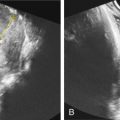Abstract
Fraser syndrome is a rare congenital malformation syndrome characterized by cryptophthalmos, syndactyly, and urogenital defect. It has been proposed that diagnosis be based on two major and one minor criteria or one major and four minor criteria. Prenatal diagnosis often relies on detection of some of the more easily detectable minor criteria, such as renal agenesis and laryngeal atresia, together with a family history. Cryptophthalmos is the most important diagnostic feature of Fraser syndrome and has been described in 90% of affected patients. Mutations in the FRAS1 and FREM2 genes have been implicated in the etiology of Fraser syndrome, together with an underlying defect of apoptosis. Prognosis is poor and dependent on the predominant anomalies. Termination of pregnancy may be recommended when diagnosis is made early, especially in the setting of renal agenesis or laryngeal atresia.
Keywords
Fraser syndrome, cryptophthalmos, syndactyly, urogenital defects, renal agenesis
Disease
Definition
Thomas et al. formulated the diagnostic criteria for Fraser syndrome including four major (cryptophthalmos, syndactyly, abnormal genitalia, and affected sibling) and eight minor criteria (congenital malformations of nose, ears, and larynx; cleft lip with or without cleft palate; skeletal symptoms; umbilical hernia; renal agenesis; mental retardation). These authors suggested that the diagnosis be assigned if two major and one minor criteria or one major and four minor criteria are present in a patient. In practice, prenatal diagnosis often relies on detection of some of the more easily detectable minor criteria, such as renal agenesis ( Figs. 128.1 and 128.2 ) and laryngeal atresia, together with a family history. Cryptophthalmos is the most important diagnostic feature of Fraser syndrome and has been described in 90% of affected patients ( Fig. 128.3 ). It consists of a continuous skin covering from the forehead to the cheek with absent palpebral fissures.




Stay updated, free articles. Join our Telegram channel

Full access? Get Clinical Tree








